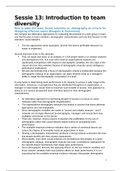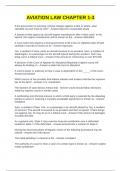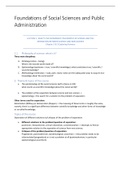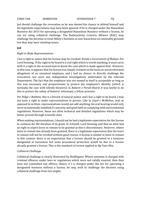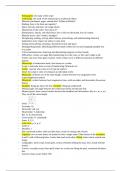Sessie 13: Introduction to team
diversity
How to make the team: Social networks vs. demography as criteria for
designing effective teams (Reagans & Zuckerman)
We compare two alternative approaches for evaluating the potential of a work group or team:
one that focuses on team members' demographic characteristics and one that focuses on the
members' social networks.
The two approaches seem equivalent, and the first seems preferable because it is
easier to implement.
Several important limits to this rationale:
First, we argue and show, in an analysis of 1,518 project teams in a contract research
and development firm, that even when internal organizational networks are
significantly homophilous with respect to demographic variables, the very logic of the
causal structure that underlies theories of demographic diversity carries ambiguous
performance implications.
We also demonstrate that a focus on demographic criteria is problematic because the
demographic makeup of an organization can place inherent limits on a manager's
ability to shape the demographic composition of a team.
If a key factor in determining team performance is its capacity to access a wide range of the
information, resources, or perspectives that are distributed throughout an organization, a
manager or team leader would need to maximize such breadth of access. One approach to
doing so is to assess prospective team members based on their demographic
characteristics.
An alternative approach for maximizing breadth of access is to focus on social
networks rather than demographic characteristics.
The organizational demography literature has tended to assume that these alternate
approaches are interchangeable.
Since demographic variables are easier to "access and reliably measure," and if
networks are strongly influenced by demography, managers and researchers may
profitably concentrate on the former.
There are, however, strong reasons to question this justification for the use of
demographic rather than social network-based criteria for anticipating team
performance.
The available empirical evidence indicates that a variety of contextual factors can
reduce the degree of homophily inside an organization or team.
Sharing a demographic characteristic produces a strong network connection the more
that people identify with their shared characteristic.
Most notably, even when social networks are homophilous with respect to a given
demographic attribute, demographic diversity has dual, contradictory implications for
the network-based mechanisms that shape team performance.
Since demographic diversity has opposing effects on two key network variables and
those network variables both have positive effects on team performance, it is not
surprising that the available empirical evidence indicates that greater demographic
1
, diversity may be associated with increases, decreases, or no corresponding change
in team performance.
These considerations carry a key empirical implication, the validation of which forms the
primary objective of this paper: that it is possible for both social network variables to have
significant effects on team performance but for changes in demographic diversity to have no
net effect because diversity has opposing effects on each of these network variable.
TEAM STAFFING AND PERFORMANCE
Causal structure
Each of the two opposing perspectives in the debate about the performance implications of
demographic diversity relies on one of the two network-based mechanisms discussed in the
social capital literature: network density and network range.
Assuming such norms are present, pessimists see organizational diversity as
problematic because diverse teams are unlikely to assume a cohesive, community-
like character. In this view, demographic diversity reduces internal coordination, which
hinders a team's ability to succeed.
While the absence of network closure-or the presence of "structural holes" between
contacts-is problematic within a team, a second strand of the social capital literature
focuses on the advantages of structural holes between contacts.
While local structural holes, like that between members A and B, hinder internal
coordination and the team's capacity for collective action, ties that bridge across
holes outside the team (like that between the contact networks of members A and C)
generate "information benefits" because they represent points of contact into different
network clusters, each of which tends to represent a relatively non-redundant
concentration of information and resources.
Thus, the two network effects we have reviewed do not contradict one another, since
the social capital arguments that support them apply to different locations in the social
structure and address two distinct challenges identified by research on teams:
creative problem solving (facilitated by external networks that bridge structural holes)
2
diversity
How to make the team: Social networks vs. demography as criteria for
designing effective teams (Reagans & Zuckerman)
We compare two alternative approaches for evaluating the potential of a work group or team:
one that focuses on team members' demographic characteristics and one that focuses on the
members' social networks.
The two approaches seem equivalent, and the first seems preferable because it is
easier to implement.
Several important limits to this rationale:
First, we argue and show, in an analysis of 1,518 project teams in a contract research
and development firm, that even when internal organizational networks are
significantly homophilous with respect to demographic variables, the very logic of the
causal structure that underlies theories of demographic diversity carries ambiguous
performance implications.
We also demonstrate that a focus on demographic criteria is problematic because the
demographic makeup of an organization can place inherent limits on a manager's
ability to shape the demographic composition of a team.
If a key factor in determining team performance is its capacity to access a wide range of the
information, resources, or perspectives that are distributed throughout an organization, a
manager or team leader would need to maximize such breadth of access. One approach to
doing so is to assess prospective team members based on their demographic
characteristics.
An alternative approach for maximizing breadth of access is to focus on social
networks rather than demographic characteristics.
The organizational demography literature has tended to assume that these alternate
approaches are interchangeable.
Since demographic variables are easier to "access and reliably measure," and if
networks are strongly influenced by demography, managers and researchers may
profitably concentrate on the former.
There are, however, strong reasons to question this justification for the use of
demographic rather than social network-based criteria for anticipating team
performance.
The available empirical evidence indicates that a variety of contextual factors can
reduce the degree of homophily inside an organization or team.
Sharing a demographic characteristic produces a strong network connection the more
that people identify with their shared characteristic.
Most notably, even when social networks are homophilous with respect to a given
demographic attribute, demographic diversity has dual, contradictory implications for
the network-based mechanisms that shape team performance.
Since demographic diversity has opposing effects on two key network variables and
those network variables both have positive effects on team performance, it is not
surprising that the available empirical evidence indicates that greater demographic
1
, diversity may be associated with increases, decreases, or no corresponding change
in team performance.
These considerations carry a key empirical implication, the validation of which forms the
primary objective of this paper: that it is possible for both social network variables to have
significant effects on team performance but for changes in demographic diversity to have no
net effect because diversity has opposing effects on each of these network variable.
TEAM STAFFING AND PERFORMANCE
Causal structure
Each of the two opposing perspectives in the debate about the performance implications of
demographic diversity relies on one of the two network-based mechanisms discussed in the
social capital literature: network density and network range.
Assuming such norms are present, pessimists see organizational diversity as
problematic because diverse teams are unlikely to assume a cohesive, community-
like character. In this view, demographic diversity reduces internal coordination, which
hinders a team's ability to succeed.
While the absence of network closure-or the presence of "structural holes" between
contacts-is problematic within a team, a second strand of the social capital literature
focuses on the advantages of structural holes between contacts.
While local structural holes, like that between members A and B, hinder internal
coordination and the team's capacity for collective action, ties that bridge across
holes outside the team (like that between the contact networks of members A and C)
generate "information benefits" because they represent points of contact into different
network clusters, each of which tends to represent a relatively non-redundant
concentration of information and resources.
Thus, the two network effects we have reviewed do not contradict one another, since
the social capital arguments that support them apply to different locations in the social
structure and address two distinct challenges identified by research on teams:
creative problem solving (facilitated by external networks that bridge structural holes)
2


